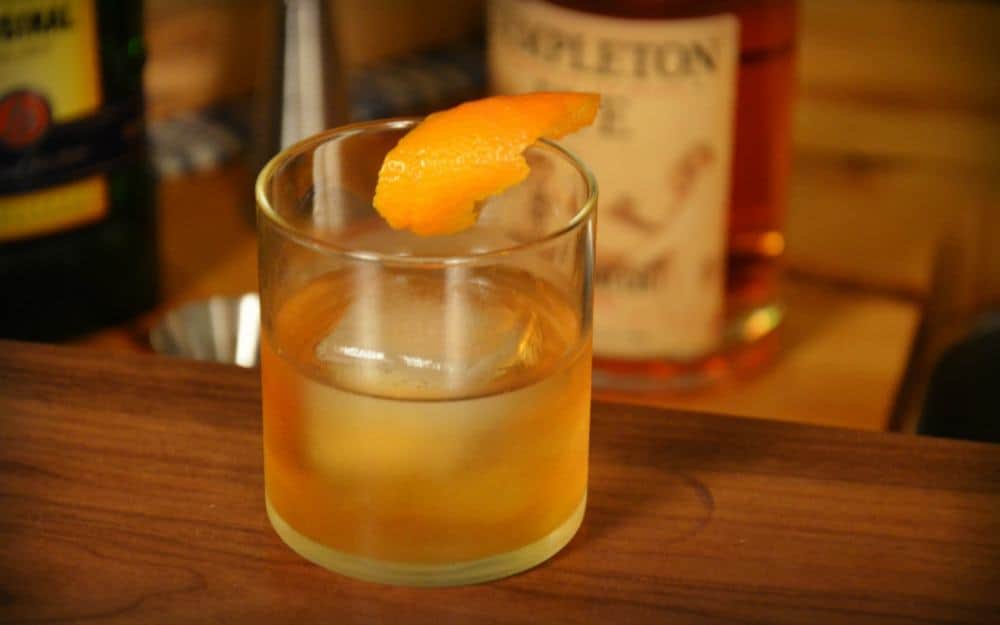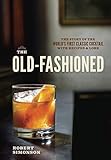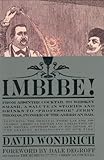
Depending who you ask, doing any of the following with in Old Fashioned may land you a permanent spot in Cocktail Purgatory:
- Muddling anything (sugar cube, lemon or orange)
- Not muddling a sugar cube
- Using sparkling water or soda
- Using Bourbon instead of Rye
- Using Rye instead of Bourbon
- Using its name in vain
- Doing fewer than 6 jumping jacks while making it
Acknowledging the above, I’m going to start with this disclaimer:
Chances are pretty good that something in this article is incorrect or has been disproven. I’ll do my best to provide sources and accurate information, BUT if you know something I don’t, please go ahead and fill me in in the comments section! Just, y’know, be nice about it.
The Old Fashioned
Wait, what’s it called?
The first thing you should know is that “Old Fashioned” is generally considered a shortened version of name “Old Fashioned Whiskey Cocktail” (source) which is a shortened version of “Whiskey Cocktail Made the Old Fashioned Way.”(source) The fact that the “Old Fashioned” appeared somewhere in the late 1800’s means that waaay back then, there were people who wanted a drink that was a throwback to how they remembered a “classic” cocktail.
So when you see folks referring to the “Classic Old Fashioned Recipe”, they may as well be saying “a whiskey cocktail the way they made it back when they were trying to make it like they used to make it.” (Say that ten times fast!)
It seems that the time the Old Fashioned first appeared was around the same time as when the word “Cocktail” stopped specifically meaning “a drink with spirit, bitters, sugar and water.” So if you wanted a drink that DID align with the old “cocktail” meaning, you’d have to specify that you wanted “an old fashioned cocktail.” If you wanted it with whiskey, you’d say so.
Hence: The Old Fashioned Whiskey Cocktail

The “Old Fashioned” Old Fashioned Recipe
Here’s my best guess on what an “Old Fashioned” recipe would have looked like “back in the day” when it was first being ordered:
- 2 oz Rye Whiskey
- 1 Sugar Cube
- 1 tsp Water
- 2 Dashes Angostura Bitters
“Dissolve a small lump of sugar with a little water in a whiskey-glass; add two dashes Angostura bitters, a small piece ice, a piece lemon-peel, one jigger whiskey. Mix with small bar-spoon and serve, leaving spoon in glass.”
– Modern American Drinks by George J. Kappeler (1895)
(Note: This is #17 on our list of 25 Classic Cocktail Books you can get for free!)
Common Squabbles – err, Points of Contention
Just as the Old Fashioned was the result of how recipes change over time, the Old Fashioned too has seen a lot of changes since its first appearance.
Type of Whiskey
Some folks feel very strongly that the “true” Old Fashioned is made with Rye Whiskey. Others say the same about Bourbon. Robert Hess recommends Bourbon with an orange garnish, but suggests Rye can work as well – with a Lemon garnish instead of orange. (source)
Garnish:
As mentioned earlier, the Old Fashioned is commonly made with either lemon or orange garnish. It’s not uncommon now for folks to add a Maraschino cherry, though some feel very strongly that “fruit” does not belong in an old fashioned.
Muddling
Yes, I said the “M” word in an article about the Old Fashioned. Yes, I expect the Mixerati at my door with sharpened bar spoons within minutes of publication. No, I don’t have my own strong feelings about whether or not anything is muddled in an Old Fashioned.
If you are using a sugar cube and water, you should dissolve the sugar before adding your liquor, otherwise it may not dissolve at all. Most recipes that call for a sugar cube recommend “muddling” to dissolve.
As for the fruit, I’ve seen recipes that recommend muddling the citrus peel to release the oils and folks who feel very strongly that the fruit itself should not me muddled. Robert Hess suggests muddling your citrus release bits that get in the way of your straw. (For the record, he’s also strongly opposed to muddling a Maraschino cherry in Old Fashioned cocktails as well). I’ve seen forum threads with strong feelings on both sides but I’ve yet to find a true consensus.
Non-Whiskey Spirits
If you consider the Old Fashioned as “A Cocktail made in the Old Fashioned Style, with Whiskey” then it seems perfectly reasonable to consider making it with other spirits. “A Cocktail made in the Old Fashioned Style, with Brandy” doesn’t quite roll off the tongue, however – so I’ll forgive you for shortening it to “a Brandy Old Fashioned.”
The base spirits which were most likely used to make “Cocktails” in the earlier half of the 19th century were Holland Gin and Brandy. (source) (Perhaps that’s why the name of this drink was the “Old Fashioned Whiskey Cocktail”). But as Martin Doudoroff explains, it’s not really useful to say that – as the Holland Gin and Brandy of the 1800’s were very different from today. (same source) That said, whiskey production in the 19th century was completely unregulated, and it’s likely it was lower quality and less consistent than what we see today. (source)
Given that the liquors available today are fairly different than what was available at the time, I have a hard time getting too worked up about a “purist” recipe. In my opinion, if you feel inclined to try a different base spirit, and you like the results – great! But since the one thing most everyone can agree on is that an Old Fashioned is made with whiskey, I would recommend specifying if yours is made otherwise (simply to avoid confusion.) Side note: if you’re in Wisconsin, this is not true – rather, Brandy is the norm. Adjust phrasing accordingly.
Soda water, Seltzer, Ginger Ale, Champagne, Unicorn Tears or Anything Else that Sparkles
Despite my best efforts, I could not find the origin of this trend – but I could absolutely verify that a lot of folks add sparkly things to their Old Fashioned cocktails. A common recipe used in modern bars and restaurants involves muddling a Maraschino cherry with an orange slice, adding whiskey, crushed ice and topping with sparkling water. It’s clear to see this is a very different drink than what you’d receive at a bar around the turn of the 19th century.

Want to learn more?
Has this article inspired you to delve deeper into the history of the Old Fashioned and other classic cocktails? Here are some great places for you to keep reading:
- Curious how this compares to the trusty Manhattan Cocktail? Wonder no more!
- Still interested? Check out Robert Simonson’s recently published book all about the Old Fashioned. I have’t had a chance to read it yet, but it comes highly recommended. (Affiliate link)
- You want more? OK, there’s no getting around it. It’s time to look at the book that launched a thousand Forum threads: Imbibe by David Wondrich. (Affiliate Link)
- Finally, here are a couple great Reddit forum threads on the topic: (1, 2)
What We’ve got Here is Failure to Communicate
I’ve always been a strong proponent of drinking what you like – regardless of how “accurate” a recipe is. But the century – and – a – half since the Old Fashioned appeared has resulted in so many variations that it’s hard to know what you’ll receive when you order it in a bar.
So I propose we solve the problem once and for all:
- Folks who want muddled fruit and sparkling water: you order an Old Fashioned.
- For those of us who want something a bit more traditional: We can order an Old Fashioned Old Fashioned.
- (And in a hundred years, we’ll be ordering the Old Fashioned Old Fashioned Old Fashioned!)






Great discussion, Julia.
I think that the Old Fashioned term comes after the Fancy Whiskey Cocktail appears. Then you couldn’t just ask for a Whiskey Cocktail.
As for recipes it’s very useful to use Simple Syrup (2:1) so you don’t need to dissolve the sugar, Embury’s recomendation.
The most important part though is to have whatever floats your boat.
Saúde!
Thanks Thiago! I couldn’t agree more – drink what you like!
Thank you for the discussion. I know the drink has become popular lately because of the show “Mad Men”. Maybe this is where the confusion comes from; are guests expecting an “Old Fashioned” Old Fashioned or an Old Fashioned? Seems funny, but your terms are accurate. I’ve found that most are expecting a much sweeter version than the original cocktail. If a guest asks for an Old Fashioned, I ask them if they like it with the sugar cube. If they seem puzzled, I prepare the drink with (please don’t ostracize me) a pre-mix and add bourbon. Meyer Brothers is a very good Old Fashioned premix. If they prefer the sugar cube, I prepare the drink the traditional way. Either way, I (kind of) know they know what to expect and I won’t get that “disappointed face”.
I’ve found the above to be true with Mint Juleps as well. Many people are expecting the sweeter pre-mix versions. I think there are some decent pre-mixes out there too. Roses and Stirrings are some popular brands that offer several flavors. Bartenders may scoff at pre-mixes, but if this is what guests are expecting, maybe not for Manhattans or Martinis, but for some other drinks like Old Fashions, Hurricanes, Mint Juleps, Iced-teas, etc., isn’t the goal to satisfy the guest? Maybe this is what guests are expecting because they are used to the drinks from the chain bar/restaurants like Chili’s or Friday’s. I am a bartender, and I am just trying to do my job in a way that pleases guests and maybe use quality mixers that also get the drink to the guest quicker in times of high volume. So I am respectfully suggesting that you guys consider doing a podcast about pre-mixes. I think it may be useful.
Thanks for your comment Sonny – I love the sugar cube question, that’s a great idea. It’s so frustrating when really, the “Old Fashioned” is 2 or 3 completely different drinks to different people!
I think you’re absolutely right though – Chris loves to talk about hospitality as being the most important part of a Bartender’s job – and that’s all about giving the guest a great experience. Then again – how do you know what a guest is used to? Do they want the sweet pre-mix or are they hoping you’ll give them a classic preparation? I like the idea about a pre-mix podcast too – thanks for that!
Thanks Sonny, and I agree that there are some high quality pre-made ingredients on the market now. I like the idea of showcasing a few on the podcast. Thanks for the comment and I agree with your view points on hospitality: create a fun and engaging environment, give them great service and a good drink quickly, and you’ll have more regulars than bar seats.
Cheers!
Thanks David, hope that Old Fashioned was delish, however you made it!